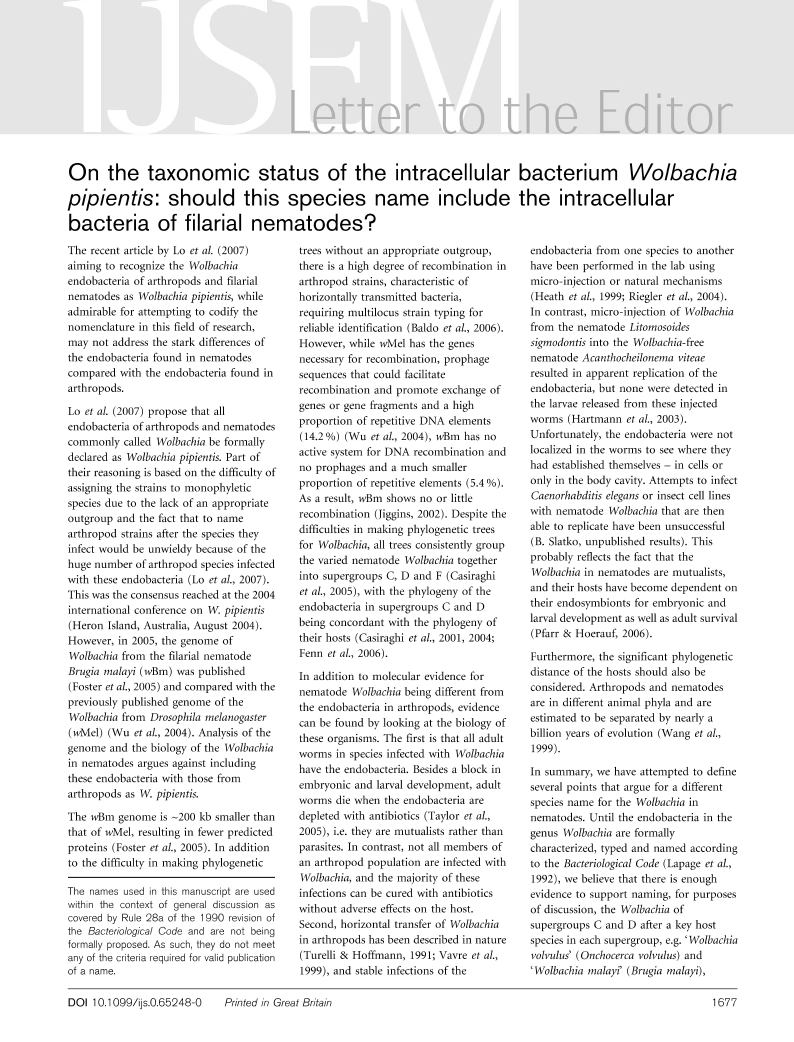
Full text loading...

On the taxonomic status of the intracellular bacterium Wolbachia pipientis: should this species name include the intracellular bacteria of filarial nematodes?, Page 1 of 1
< Previous page | Next page > /docserver/preview/fulltext/ijsem/57/8/1677-1.gif
There is no abstract available.

Article metrics loading...

Full text loading...
References

